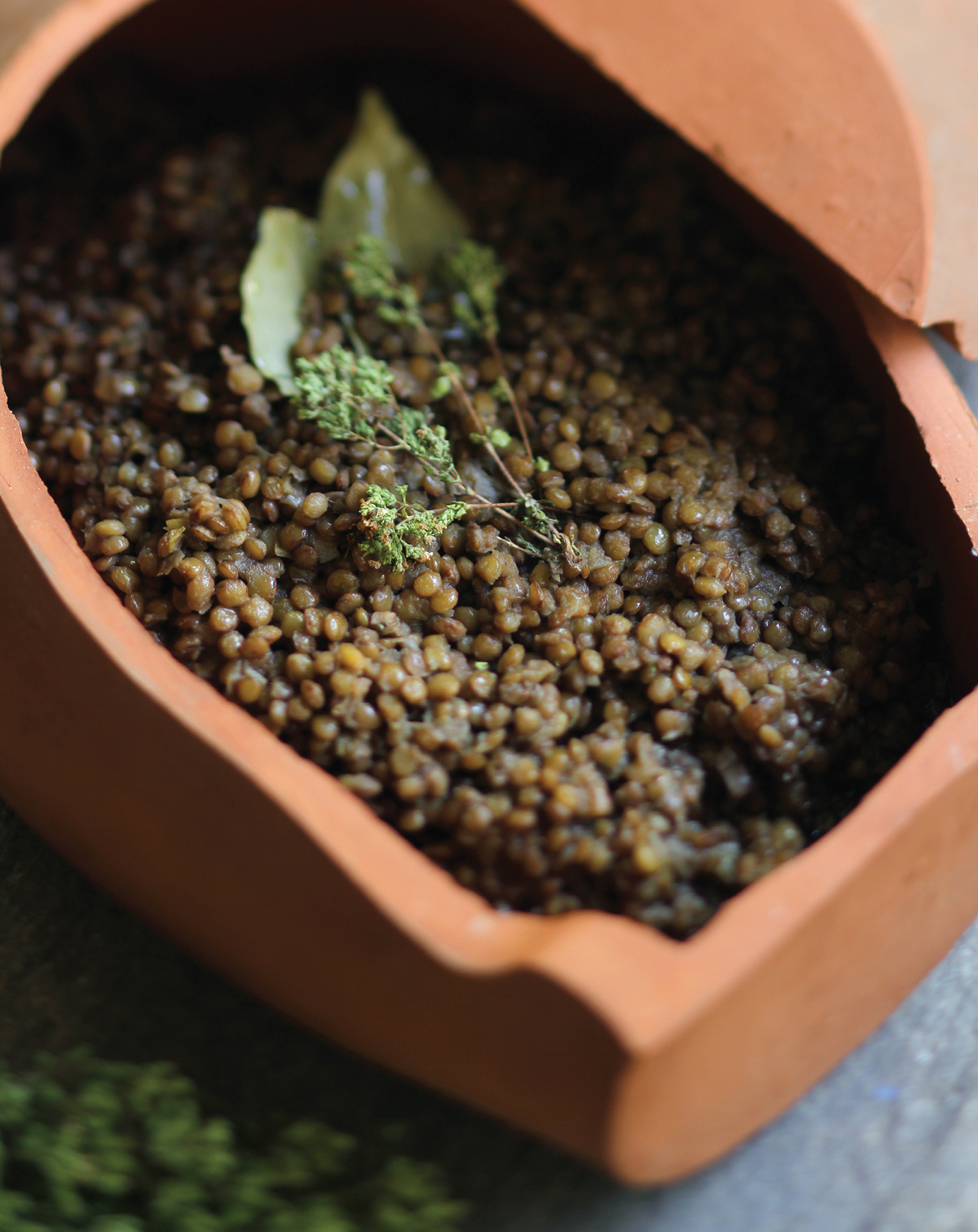

serves 6
The idea for this dish came after a conversation with Jerolyn Morrison, an American anthropologist living in Crete, who has studied and re-created recipes from the Minoan era. One of the most fascinating aspects of Greek cuisine is the continuity of use of so many ingredients from prehistoric times to the present. Among the oldest ingredients still revered today are honey, olive oil, herbs, and native pulses, first among which is the humble lentil. Honey, together with spices and herbs, was often used to flavor savory dishes in antiquity as well. The recipe that follows is my adaptation, with a fair amount of poetic license!
⅔ cup (160 ml) extra-virgin Greek olive oil, plus more if needed
2 large leeks, trimmed, washed well, and chopped
4 garlic cloves, chopped
1 pound (450 g) dried small green or brown lentils, picked over for debris and rinsed
2 bay leaves
4 dried Greek oregano sprigs
1 tablespoon coriander seeds, crushed in a mortar with a pestle or in a spice grinder
1½ teaspoons cumin seeds, crushed in a mortar with a pestle or in a spice grinder
¼ cup (60 ml) Greek thyme honey, pine honey, or blossom honey
2 tablespoons red wine vinegar
Sea salt
Water or vegetable broth
In a large wide saucepan or flameproof clay casserole, heat 3 tablespoons of the olive oil over medium heat. Add the leeks and cook, stirring, for about 8 minutes to soften. Stir in the garlic. Add the lentils and stir to coat with the oil. Pour in enough water to cover the lentils by 2 inches (5 cm). Add the bay leaves and oregano sprigs, raise the heat slightly, and bring to a boil. Cover, reduce the heat to medium-low, and simmer for about 30 minutes, until the lentils are al dente but not completely cooked. The lentils will have absorbed almost all the water by the time they are ready to come off the stove. Discard the oregano sprigs and bay leaves.
Preheat the oven to 375ºF (190ºC).
If you were using a metal pan, empty the lentils into a clay or glass baking dish with a lid. Toss the lentils with the remaining olive oil, the coriander, cumin, honey, vinegar, and salt to taste. Add enough water or vegetable broth to cover the lentils by about ½ inch (1.5 cm). Cover and bake for 45 minutes to 1 hour, until the lentils are tender but still retain their shape. Check on the liquid content during baking and add additional water or broth as needed. The end result should not be soupy or too wet, but rather the lentils should have absorbed all the liquid in the pan, expanded nicely, and not disintegrated or dried out. Serve with good crusty bread, preferably whole-grain or sourdough.

One of my favorite bean stories involves a New York restaurant and a Greek American New Yorker friend with enough moxie to get up and walk out when the server pronounced the gigantes appetizer “jee-GON-tez.” They may as well have served moo-SA-ka, my incensed pal Valerie joked.
Truth be told, Greek cooks are partial to their gigantes (pronounced YEE-ghan-dess) and have a trick or two for cooking them. The beans always need to be soaked overnight or for at least 8 hours and up to 12 hours, enough for them to swell and soften to the touch just a little. Then, before being baked, giant beans need to be boiled. I do this by draining them and placing them in a pot with enough fresh cold tap water to cover. It’s hard to advise on the exact simmering time, which can be anywhere from 1 to 2½ hours depending on the age and condition of the beans (buy them from a Greek store, either brick-and-mortar or online) and the alkalinity of the water. Soft water, like my favorite New York tap, is best for cooking beans. If you live in a place with hard water, add a pinch of baking soda to the pot when simmering the beans. Do not salt them.
You will know the giant beans are done to the point of being ready to drain and bake when they are still al dente but soft enough to eat in, say, a salad. Their skins might be cracking or peeling off, which is natural.
When you do bake them, as in the recipes here and here, what you are looking for is a finished dish in which the beans are on that magical verge of disintegrating, still holding their shape, but buttery and soft on the inside. It’s not by chance that the closest thing to a Greek giant bean stateside is, indeed, the butter bean. You can substitute those, but cooking times will vary, and butter beans are a little smaller and softer.
